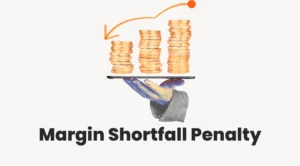In options trading, implied volatility, also known as IV, is of great importance as it helps investors check how much the price of an option may move in the future. If you are looking to understand the significance of implied volatility and how it can help you, then here is the read for you. In this blog, we will learn how IV works while covering major points like how IV is calculated, volatility arbitrage strategies, and more.
What is Implied Volatility?
Implied volatility is a metric that helps you understand how much traders expect the price of a stock to move in the future. It is expressed as a percentage and is used to help price options. When traders would expect a stock to make big moves, IV or Implied volatility rises. However, if they expect smaller moves, IV goes down. Isn’t it quite simple to understand? If not, here’s what implied volatility is all about in simple terms:
- High IV means the market or the traders think the stock would move a lot.
- Low IV means the market expects the stock to be more stable.
How is IV Calculated?
Calculating IV is not as simple as counting numbers on your hand. There are certain parameters or complex formulas like the Black-Scholes model with which the value of IV is calculated. With the above-mentioned model, the following factors are taken into account:
- The current stock price
- The strike price of the option
- Time to expiration
- Risk-free interest rate
Just by checking all these parameters and numbers, traders can determine implied volatility. However, today, due to advanced technologies, many trading platforms and apps automatically calculate IV for you.
Differences Between IV and Historical Volatility
While Implied Volatility (IV) is all about what traders think will happen, Historical Volatility (HV) is all about what already happened to the stock’s price.
So, suppose you are looking at a stock ahead of its quarterly earnings report. Historical volatility would tell you how much the stock has moved in the past, while implied volatility shows what the market expects after the earnings come out.
Implied Volatility and Quarterly Results
One of the best examples of how IV works is during quarterly results. Before a company announces its earnings, IV usually tend to go up as no one knows what will happen. This is because the stock of the company could soar or crash based on the earnings report. This uncertainty is what makes options more expensive. You should also keep in mind that after the earnings report is released, IV usually drops, even if the stock price moves a lot.
Volatility Arbitrage Strategies
Ever heard of volatility arbitrage? No? Well, some traders use a strategy called volatility arbitrage to make profits from changes in implied volatility.
What does this mean?
It means traders bet on the difference between implied volatility and actual price movements. If they believe the current IV is too high, they may sell options, hoping the IV will drop. If they believe IV is too low, they may buy options, expecting a big price move. This way they register profits.
What Is Implied Volatility Surface?
The implied volatility surface is a 3D chart that helps traders visualise how IV changes depending on the strike price and time to expiration. It shows the market’s expectations for different options on the same stock.
Let’s understand it this way: Imagine the surface like a wavy sheet. Now,
- X-Axis shows different strike prices (how far the option is from the current stock price).
- Y-Axis shows the expiration dates (how much time is left before the option expires).
- Z-Axis shows the implied volatility (the market's expected price movement).
Now, the surface can show patterns like Volatility Smile and Volatility Skew, which help traders understand how IV varies across different options.
Relationship Between IV and Major Events
Implied volatility usually increases before major events, whether it is company earnings reports, product launches, or political announcements. This is because traders often expect big price swings in such times.
Volatility Trading Strategies: How Traders Use IV
There are different strategies you, as traders, can use if you wish to take advantage of changes in implied volatility:
Buying Straddles or Strangles
A straddle is all about buying a call and a put option with the same strike price and expiration date. It is a bet that the stock would make a big move, either up or down. You can use this strategy when IV is rising before a major event like an earnings report. On the other hand, a strangle is similar, but the strike prices for the call and put are different. This strategy is often cheaper than a straddle but still benefits from big price changes.
Selling Options in High IV Environments
You can also sell options when the IV is high with the expectation to fall after the event. So, when IV drops, you can make profits.
Volatility Arbitrage
As mentioned earlier, you can go with volatility arbitrage as well wherein you bet on the difference between implied volatility and actual price movement.
Conclusion
If you want to make better decisions in options trading, especially around big events like earnings reports, then implied volatility or IV is something you must know. Whether you are looking at volatility patterns or using strategies like arbitrage, make sure to use the right tools like the Tradejini CubePlus App. Tradejini trading platform offers great services for both new and experienced traders. It is easy to use and would help you track implied volatility and make smart trades.
Get started now!
Also Read: Protective Put Strategy Explained: How It Works and Illustrative Examples



